
© Chris Hardy. (Click image for larger version)
Smuin Contemporary American Ballet
Dance Series 02: Falling Up, If I Were a Sushi Roll, Oasis
★★★★✰
San Francisco, Yerba Buena Center for the Arts
20 April 2018
www.smuinballet.org
www.ybca.org
There is much to love about Smuin Contemporary American Ballet – diverse repertory, artistically and technically gifted dancers and a winning approach to programming. Every year (at least in recent memory), Smuin has presented two mixed repertory bills, one in the fall, one in the spring, and sandwiched in between is the company’s ever-popular holiday revue. Each season boasts a diverse wealth of material from different choreographic voices – newer and established, women and men. Styles and genres similarly range, from neo-classical abstraction to dance theatre to romantic lyricism to everything in between. On any given Smuin program, one might encounter reconstructions, new commissions, company premieres or returning repertory, often by founder Michael Smuin, who sadly passed away in 2007. Not every work is going to speak to everyone, but with such broad programming, it seems likely that something (or perhaps many things) is bound to resonate. With the returns of Choreographer-in-Residence Amy Seiwert’s Falling Up (2007), Helen Pickett’s Oasis (2016) and the world premiere of Val Caniparoli’s If I Were a Sushi Roll, Dance Series 02 fired on all cylinders. The program, which launched Friday night at Yerba Buena Center for the Arts, was a terrific conclusion to Smuin’s twenty-fourth season.
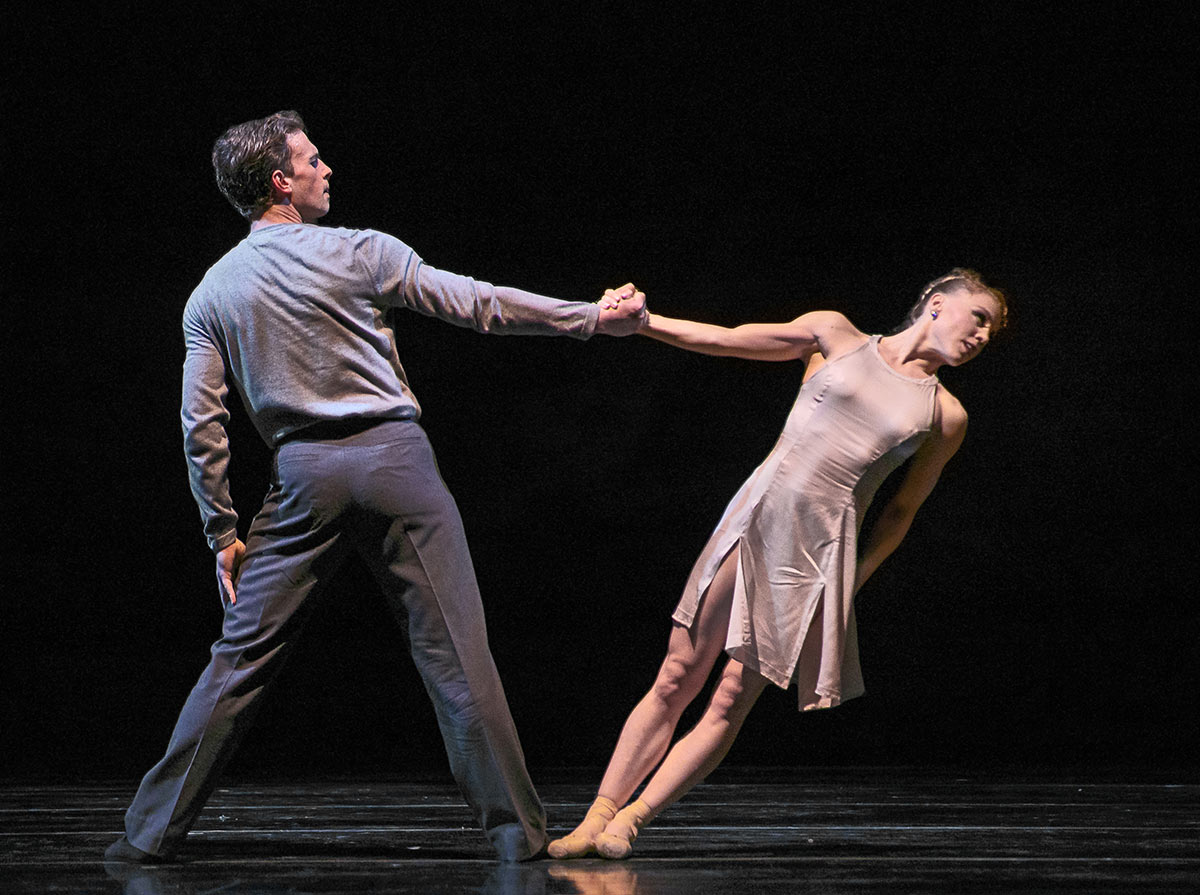
© Chris Hardy. (Click image for larger version)
Seiwert (who next season takes over as Sacramento Ballet’s Artistic Director) is known for crafting dance that investigates the possibilities within ballet vocabulary, often upending expectations of what ballet is or can be in the process. This exploratory, experimental spirit was definitely at play in 2007’s Falling Up. An abstract composition for four couples set to a sweeping Brahms score, the work unfolds like a series of living snapshots. And instead of recorded music, Smuin engaged pianist Daniel Sullivan. Live music isn’t typical (or hasn’t been lately) at Smuin, and it was such a treat. Sullivan gave an inspired performance, approaching every musical motif with intensity, care and artistic fortitude. Hopefully this is the beginning of a new trend at the company.
While Falling Up was abstract, it was not devoid of meaning. This was a dance of questions, posed through the various choreographic vignettes. Seiwert steeped the work with a sense of ‘up-ness’ – an emphasis on the highest point in the lifts; extensions that grew and expanded in space; spins that finished up in their turning positions rather than down on the floor. Then suddenly, flat-footed postures entered the vernacular. How does that change the upward dynamic? Demi-pointe work made an appearance alongside full pointe sequences. How does that alter the line of the leg? When the upper back and torso are given license to soften, ripple, and contract, how does the classical ballet technique look different? Even staging became a point of query. In her solo, Erica Chipp-Adams moved purposely ahead of the light cues, the light following her to each new location on the stage. When the dancer cues the light as opposed to the light cuing the dancer, how is the viewership lens altered? Falling Up didn’t seek to provide answers. Instead it allowed all these creative lines of inquiry to percolate and hover in a space where each individual could consider them. The dancers shone throughout, oozing poise and confidence even through a few challenging transitions.
A title like If I Were a Sushi Roll suggests that some whimsy may be in store, and indeed, Caniparoli’s new nine-part dance suite had whimsy to spare – which, as far as I’m concerned, we could stand to see a bit more in concert dance. There was whimsy in Douglas Schmidt’s scenic design – canvases of painted sushi and coffee mugs rolling in and out of the various scenes, one canvas a blown-up photo of Jane Fonda in 1980s aerobics attire. There was whimsy in the movement – palms swimming through the air like fish, Charleston-style steps breaking into the contemporary choreography. There was whimsy in the score. Each of the dance’s nine sections was named for and set to a selection from Nico Muhly and Teitur’s 2016 album “Confessions.” Not all of the nine musical chapters included vocals, but when they were present, they covered a range of topics, some of them certainly whimsical. How a printer smells in the morning, for instance.
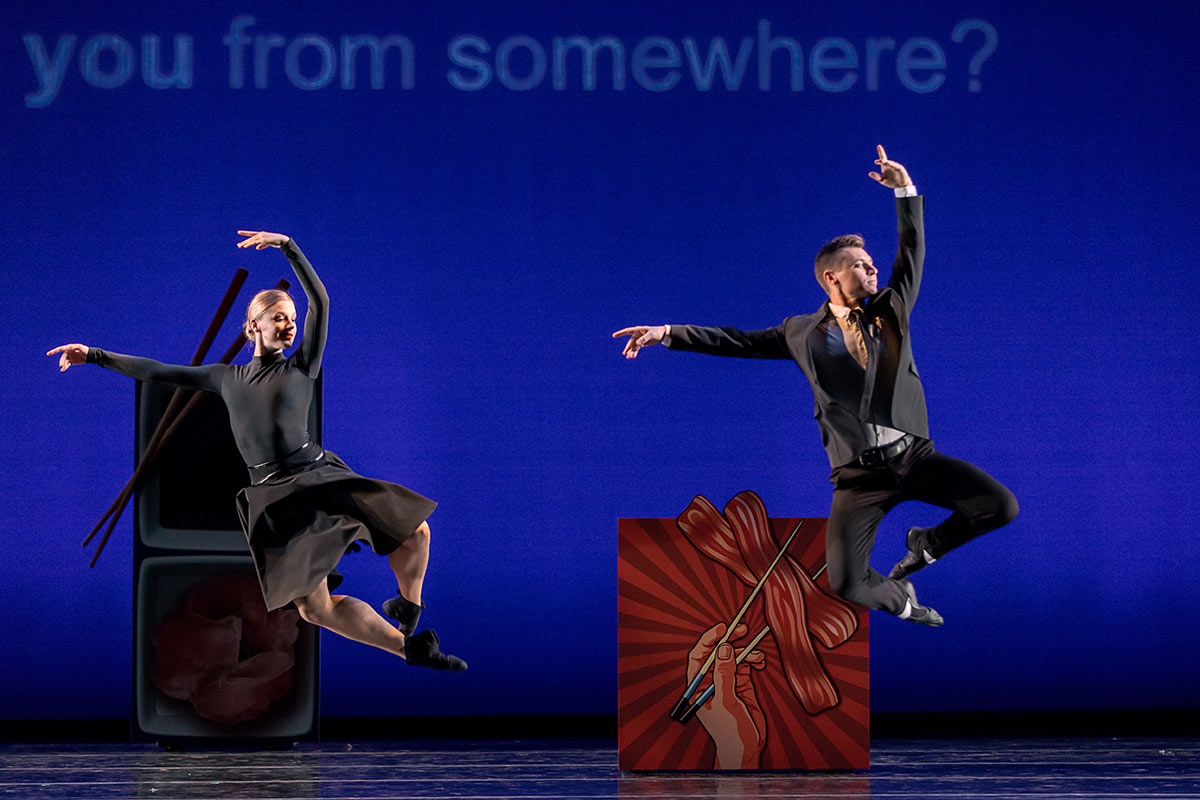
© Chris Hardy. (Click image for larger version)
Caniparoli’s Sushi Roll was one hundred percent unpredictable, and I loved that. From one minute to the next, you didn’t know what might unfold onstage. One chapter found the cast trudging around like sullen teenagers, while others were filled with emotive partnering. In the last moments of the work, soloist Robert Kretz retreated into a set piece, folding himself into the ginger compartment of a sushi plate. But with all these delightful turns and shifts, the work did need a constant – something that would bind it together and act as a counterpoint to the ever-changing landscape. Sushi Roll’s constant was its choreographic clarity; every shape, position and motif incredibly defined from beginning to end, be it vogue-ing or Celtic footwork, character dance or pedestrian running.
There was also a profound connection between what was happening on stage and what was happening in the score, and I think if anything, this connection is what the piece was about. Sometimes the connection was literal, like in “Small Spaces,” the dance’s final movement. In Kretz’s solo, the choreography was deliberately constrained, a box of light determining how big or small the movement could be. Sometimes it was more interpretive, like in “Her First Confession,” Sushi Roll’s fourth dance. Here, the lyrics tell a story of desire, infidelity and betrayal. Following that theme, Caniparoli built a haunting love triangle, a pas de trois for Ben Needham-Wood, Terez Dean and Maxwell Simoes. Or sometimes the connection was structural. Much of the music had a continuous quality, with no stops, starts or cadence points to break up its momentum. Sushi Roll’s choreography reflected that constancy. Physicality washed over the stage without interruption; movement morphing seamlessly from one idea to another.
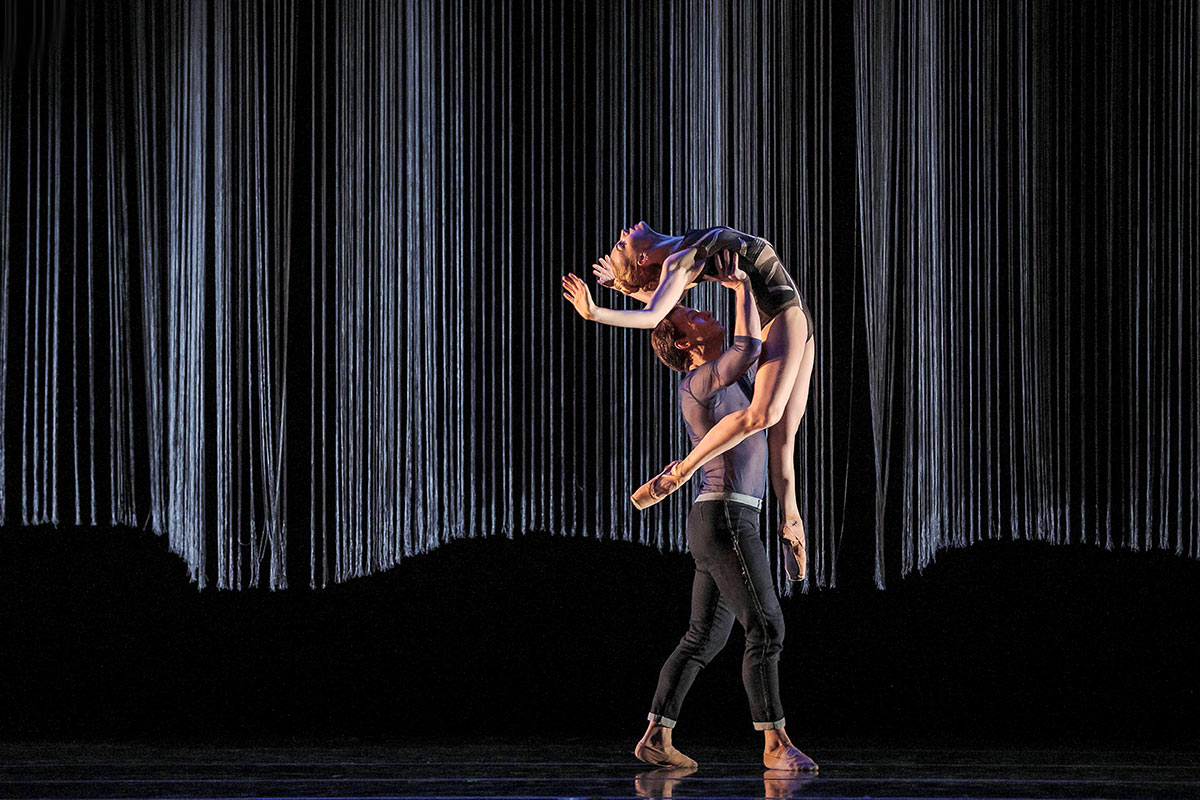
© Chris Hardy. (Click image for larger version)
Created on Smuin in 2016, Pickett’s Oasis takes a deep dive into the power of water. And the concept is richly woven into every aspect of the ballet. Curved in a serpentine wave, large, string sculptures hung from the rafters onto which water images were projected (scenic and video design by Emma Kingsbury). Michael Oesch’s flickering lights ushered in a raging storm, and Jeff Beal’s original score evoked droplets and streams with its plucky staccatos and cascading arpeggios. Choreographically, legs fluttered and punctuated the space, seemingly flicking water out and away. Toes tapped the floor, like they were being dipped into shallow puddles. And sternums reached to the sky, ready to experience rain’s cleansing power.
With all these pieces working together, Oasis is a visual stunner, and that is still true two years after its premiere. Though this time, the energy felt different; it was missing some of the freshness and vibrancy. But I was curious if an outside force may have been a factor. I started to notice half-way through the night that the dancers seemed to be grappling with some stage surface challenges. It wasn’t apparent in the opening work, but started to show up in Sushi Roll and not as part of the choreography. I wonder if the stage was getting more and more slippery as the program went on, and perhaps that may have affected the vigor and energy in this final work.









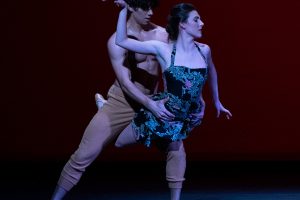
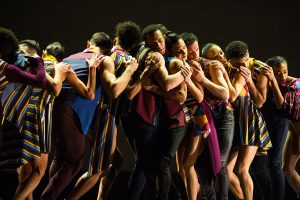


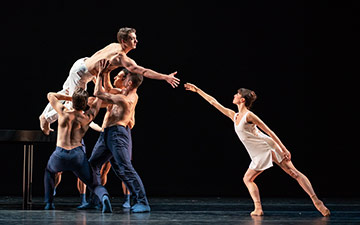

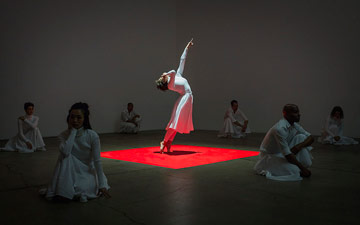
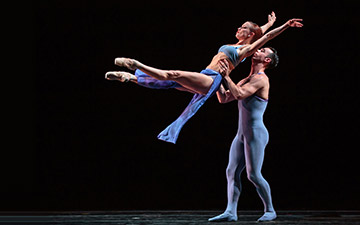
You must be logged in to post a comment.